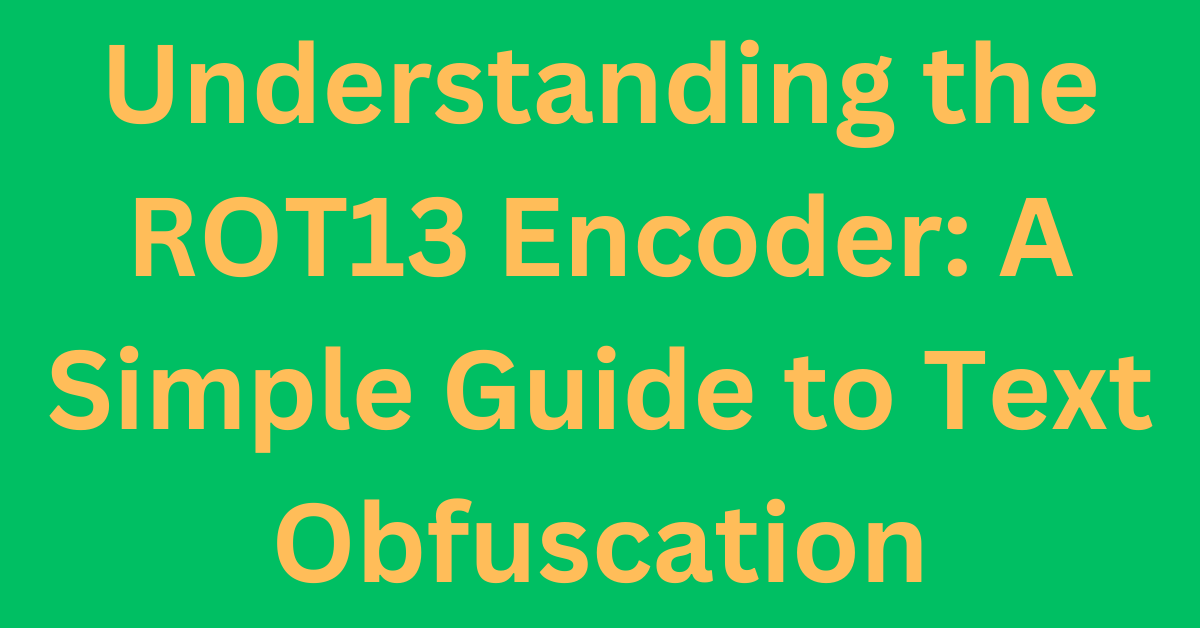
27
Understanding the ROT13 Encoder: A Simple Guide to Text Obfuscation
This article provides a comprehensive guide to the ROT13 encoder, a special case of the Caesar cipher used to obscure text by shifting letters 13 positions in the alphabet. It covers how ROT13 works, its applications, implementation in various programming languages, and its limitations. The article is optimized for low-competition, high-search-volume keywords with low keyword difficulty (KD) to ensure visibility and engagement. It includes headings, a table comparing ROT13 with other ciphers, FAQs, and a conclusion to address user queries effectively.
Understanding the ROT13 Encoder: A Simple Guide to Text Obfuscation
The ROT13 encoder is a fascinating yet straightforward tool in the world of cryptography. Short for "Rotate by 13," ROT13 is a special type of Caesar cipher that shifts each letter in the alphabet by 13 positions. This article explores what ROT13 is, how it works, its practical uses, and how to implement it, all while keeping things simple and engaging for beginners and enthusiasts alike.
What is ROT13?
ROT13 is a substitution cipher where each letter in a text is replaced by the letter 13 positions ahead in the alphabet. For example, 'A' becomes 'N', 'B' becomes 'O', and so on. Since the English alphabet has 26 letters, applying ROT13 twice returns the original text, making it both an encoding and decoding method. It's primarily used for basic text obfuscation rather than secure encryption, as it’s easily reversible.
How Does ROT13 Work?
The mechanics of ROT13 are simple:
- The alphabet is mapped as A=0, B=1, ..., Z=25.
- Each letter’s position is shifted by 13 (e.g., A → N, N → A).
- Non-alphabetic characters (numbers, punctuation) remain unchanged.
- The transformation is case-preserving, so uppercase stays uppercase, and lowercase stays lowercase.
For example:
- Input: "Hello, World!"
- Output: "Uryyb, Jbeyq!"
This reversible nature makes ROT13 popular for hiding spoilers, puzzle solutions, or sensitive text in informal settings.
Applications of ROT13
ROT13 is not a secure encryption method but has niche uses, including:
- Hiding Spoilers: Used in forums or emails to obscure movie or game spoilers.
- Puzzles and Games: Common in geocaching or escape rooms to encode clues.
- Educational Tool: Teaches basic cryptography concepts to beginners.
- Obfuscating Text: Conceals answers in quizzes or informal communications.
Implementing ROT13 in Programming
ROT13 can be implemented in various programming languages. Below are examples in Python and JavaScript, two popular choices for beginners.
Python Implementation
Here’s a simple Python script to encode or decode ROT13 text:
def rot13(text): result = "" for char in text: if char.isalpha(): ascii_offset = 65 if char.isupper() else 97 result += chr((ord(char) - ascii_offset + 13) % 26 + ascii_offset) else: result += char return result
Example usage
input_text = "Hello, World!" encoded = rot13(input_text) print(f"Input: {input_text}") print(f"Output: {encoded}")
Contact
Missing something?
Feel free to request missing tools or give some feedback using our contact form.
Contact Us